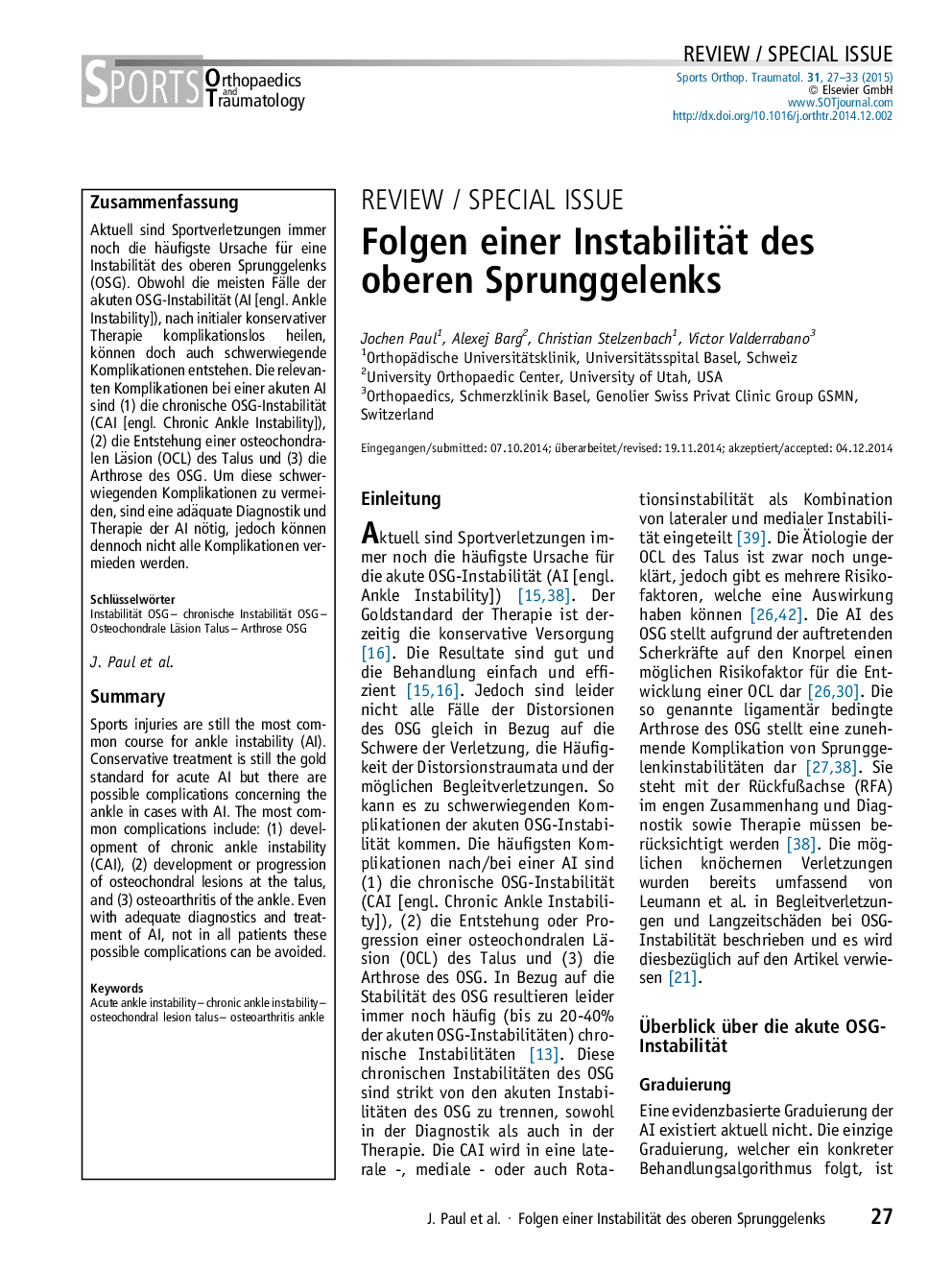| Article ID | Journal | Published Year | Pages | File Type |
|---|---|---|---|---|
| 2740240 | Sports Orthopaedics and Traumatology | 2015 | 7 Pages |
ZusammenfassungAktuell sind Sportverletzungen immer noch die häufigste Ursache für eine Instabilität des oberen Sprunggelenks (OSG). Obwohl die meisten Fälle der akuten OSG-Instabilität (AI [engl. Ankle Instability]), nach initialer konservativer Therapie komplikationslos heilen, können doch auch schwerwiegende Komplikationen entstehen. Die relevanten Komplikationen bei einer akuten AI sind (1) die chronische OSG-Instabilität (CAI [engl. Chronic Ankle Instability]), (2) die Entstehung einer osteochondralen Läsion (OCL) des Talus und (3) die Arthrose des OSG. Um diese schwerwiegenden Komplikationen zu vermeiden, sind eine adäquate Diagnostik und Therapie der AI nötig, jedoch können dennoch nicht alle Komplikationen vermieden werden.
SummarySports injuries are still the most common course for ankle instability (AI). Conservative treatment is still the gold standard for acute AI but there are possible complications concerning the ankle in cases with AI. The most common complications include: (1) development of chronic ankle instability (CAI), (2) development or progression of osteochondral lesions at the talus, and (3) osteoarthritis of the ankle. Even with adequate diagnostics and treatment of AI, not in all patients these possible complications can be avoided.
